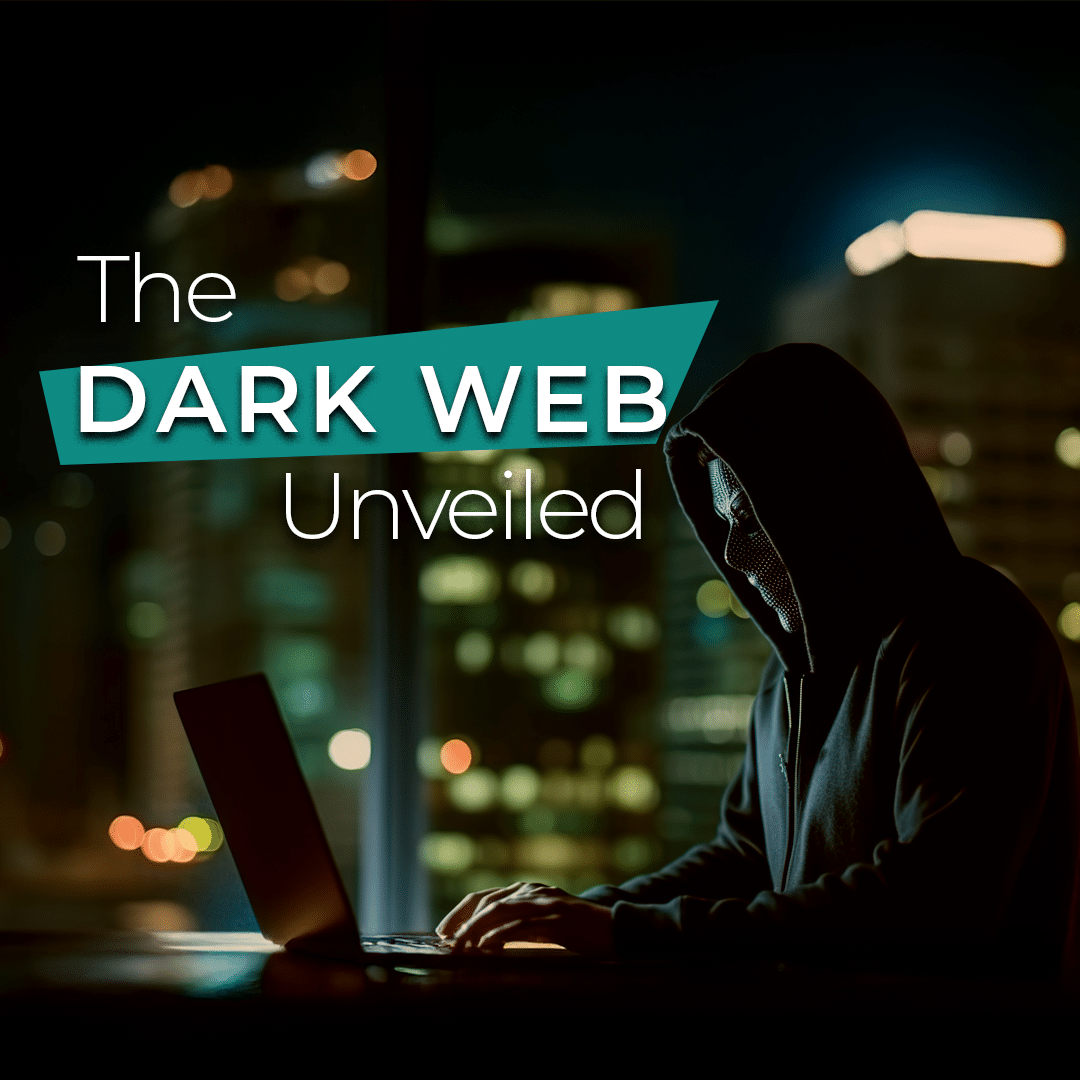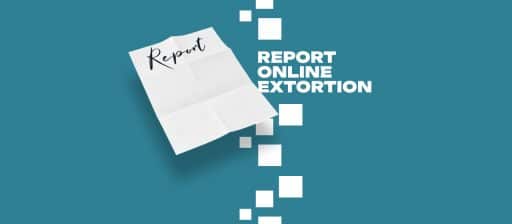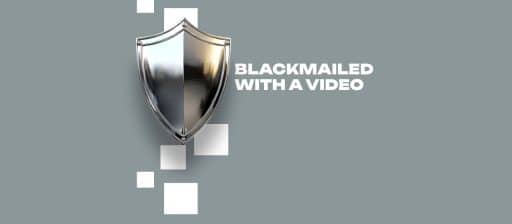The dark web is a shadowy place. Nearly 60% of the dark web contains illegal content, including violence, extremist platforms, illegal marketplaces, drugs, and cybercrime forums.(1) The most profitable illegal products sold on the dark web include stolen crypto accounts, online banking data, and e-wallets.
The dark web isn’t all bad. It has some legitimate users: activists in oppressive regimes, journalists looking for a scoop, businesses seeking information anonymously, and cybersecurity companies conducting threat intelligence. Even Facebook maintains some presence on the dark web.
Digital Forensics Corp. is a leader in cybersecurity, digital forensics, and threat intelligence. Our cyber security professionals continually scan the dark web for stolen content related to our clients. If found, we will work with the individual to reestablish their online safety.
Let’s demystify the dark web and explore its implications for cybersecurity and threat intelligence. Understanding the dark web provides key insights into potential cyber threats, emerging attack techniques, and stolen content so you can protect yourself online.
The Dark Web vs. the Deep Web: What’s the Difference?
The dark web and the deep web are sometimes mistakenly used synonymously, but there are clear differences. Both are separate from the surface web, which is the Internet readily available to the public that’s ungated.
What is the Deep Web?
Comprising 95% of the Internet, the deep web is made up of pages that aren’t intentionally indexed by search engines (2). Pages on the deep web are hidden to protect users. It’s got a scary-sounding name, but there’s nothing illicit about it. The deep web serves a very important and legitimate purpose.
The deep web is any gated portion of the Internet that needs to be accessed with a username and password. It includes:
- Internal company Intranets such as employee portals, HR dashboards, and internal communication tools.
- University libraries and research databases.
- Sites that can only be accessed by paid membership: Netflix, music sites, some paid news services.
- Banking institutions, insurance agencies, and stock trading platforms.
What is the Dark Web?
The dark web is a subset of the deep web that is intentionally hidden and provides more anonymity, privacy, and secrecy. It requires a specialized browser like a Tor browser that allows the user anonymous access that’s difficult to track. Nobody knows the size of the dark web, but some analysts estimate it to be about 5% of the total Internet.
Websites on the dark web are normally less visual versions of other websites, but there are some key differences. One is the naming structure. Instead of ending in .com, .co, .au, etc., all dark websites end in .onion. Dark websites often use scrambled naming structures that are impossible to remember and can change frequently to avoid detection.
The anonymity and privacy of the dark web make it a petri dish for crime, terrorism, and cyber threats. At the same time, many legitimately use the dark web to avoid censorship, conduct business research, share journalism, or conduct threat intelligence.
There are numerous misconceptions about the dark web:
- Just visiting the dark web will not get you hacked, the real risk comes from downloading malicious files, clicking unsafe links, or engaging in illegal activities.
- Many believe the dark web is completely anonymous, but activity can be tracked if users don’t use proper security measures.
- Some believe you can hire a hitman on the dark web, but almost all murder-to-hire offers are a scam.
Data Breaches: Fueling the Dark Web Economy
Data breaches are a driving force behind the dark web economy. Stolen personal and financial information is frequently bought, sold, and exploited in illicit marketplaces on the dark web. In a corporate security breach, cybercriminals can gain access to vast amounts of sensitive data, including usernames, passwords, Social Security numbers, and credit card details. Cyber criminals purchase this information for use in identity theft, financial fraud, and phishing attacks.
Dark Web Marketplaces and Forums
Dark web marketplaces and forums serve as underground hubs for illicit goods, services, and the exchange of sensitive data stolen in data breaches. These platforms operate similarly to traditional ecommerce sites but maintain anonymity for both seller and buyer.
- Stolen PayPal, online banking, and cryptocurrency exchange accounts are sold with balances intact.
- Accounts to subscription services like Netflix or Spotify are resold through “account-sharing” services.
- Corporate email logins can be resold for phishing and ransomware attacks.
A leader in threat intelligence, Digital Forensics Corp. specializes in dark web monitoring for compromised client data. We continually scan marketplaces and forums on the dark web for compromised information. Our team can help you lock down your data and protect yourself from fraud.
The Impact on Businesses and Individuals from Data Breaches
The consequences of a data breach for businesses can be severe. This can include financial loss, reputational damage, and legal liabilities, including regulatory fines and lawsuits if their customer data is not properly secured. Equifax’s 2017 data breach led to $700 million in settlements and regulatory penalties.(3)
Individuals are equally susceptible to identity theft and financial fraud. Cybercriminals can open fake accounts or take out loans or credit cards in victims’ names.
What is the Dark Web Used For?
The dark web is predominantly used for illicit activities, though some actors use it for legitimate purposes. Other activities fall into a gray area that is nonetheless illegal.
Illegal Activities on the Dark Web
Some of the most common illicit activities on the dark web include drug trafficking, child pornography, human trafficking and exploitation, weapons sales, and cybercrime services. These crimes are shared and advertised over illicit forums, where ransomware groups trade lists of targets. Notorious dark web marketplaces or forums include:
- Ransomexx
- RansomHouse
- Ransomware blog
- Bloody Ransomware
- BidenCash
Legitimate Uses of the Dark Web
The anonymity and privacy offered by the dark web offers a variety of legitimate purposes.
- Citizens in oppressive regimes can circumvent government censorship.
- Journalists can collaborate anonymously with whistleblowers.
- Students can access free academic content that would normally require hefty fees.
- Many social media companies maintain mirror sites on the dark web for those wishing to avoid government monitoring.
The Gray Area of the Dark Web
Many activities on the dark web fall into a gray area. These can include:
- Purchasing or selling stolen data from a data breach.
- Purchasing credentials for a stolen Netflix account.
- Purchasing illicit substances.
While these activities don’t constitute the initial theft or crime, they are still illegal. It is important to understand the difference between legal and illegal activities on the dark web. Law enforcement authorities monitor the dark web and conduct sting operations in marketplaces and forums to catch cybercriminals.
Cybersecurity Challenges of the Dark Web
The dark web presents significant challenges to cybersecurity. It’s a hotbed of marketplaces for cybercrime, Ransomware-as-a-Service, data breaches and identity theft, and malware distribution. To help mitigate these threats, cybersecurity professionals like Digital Forensics employ deep web monitoring, threat intelligence, and advanced tracking techniques to keep their clients safe online.
Threat Intelligence and Monitoring
Conducting dark web threat intelligence can be challenging due to the complexity of data analysis and the need for specialized expertise to navigate the dark web effectively. Cyber threats evolve rapidly, so timeliness is crucial in staying up to date on the tactics of cybercriminals.
At Digital Forensics Corp., we use advanced threat intelligence techniques to monitor dark web activity and proactively identify potential threats. This ensures companies stay ahead of cybercriminals and can better prevent cyberattacks before they occur.
Anonymity and Attribution
Identifying and attributing cyberattacks on the dark web is difficult due to its inherent anonymity. Cybercriminals use anonymity tools like the Invisible Internet Project (I2P) and VPNs to evade detection and protect their identities. Many execute their crimes through botnets, networks of infected computers controlled by the attacker, and hide behind compromised devices so it looks like the attack came from an innocent user.
Cyber attribution, the process of identifying and determining the responsibility for a cyberattack or other malicious cyber operation. This relies on behavioral analysis and advanced digital forensics. The professionals at Digital Forensics Corp. utilize advanced methods to track down the location and identity of cyber attackers.
Proactive Defense and Mitigation
The best defense against cybercriminals is to take a proactive approach and prevent the crime from happening in the first place. Here is what businesses should do to protect against dark web threats:
- Regularly conduct dark web monitoring and threat intelligence to identify threats before they escalate into significant security breaches.
- Enforce strong password policies with multi-factor authentication.
- Conduct cyber awareness training to identify phishing emails and other scams.
- Employ VPNs to restrict unauthorized access to critical systems.
- Apply end-to-end encryption for data in transit and at rest.
- Conduct penetration testing to identify system vulnerabilities.
Here are tips for individuals to protect themselves against the dark web:
- Use strong and unique passwords and enable multi-factor authentication.
- Avoid downloading unknown software.
- Monitor financial and personal data.
- Be wary of phishing and other scams.
- Avoid dark web marketplaces.
The cyber professionals at Digital Forensics Corp. can help organizations develop and implement effective cybersecurity strategies to better keep your company safe from data breaches.
Digital Forensics Corp. specializes in:
- Incident response
- Vulnerability assessment
- Spyware detection
- Electronic risk control
- Penetration testing
- Threat intelligence
- Dark web monitoring
If you need assistance with any issue involving cybercrime, we are here to help. Our team is available 24/7 to take your call.
- https://www.enterpriseappstoday.com/stats/dark-web-statistics.html
- https://timesofindia.indiatimes.com/blogs/livesimply/this-is-what-makes-up-95-of-the-internet/
- https://www.reuters.com/article/technology/equifaxs-700-million-data-breach-settlement-spurs-criticism-calls-for-new-rul-idUSKCN1UH16Y/#:~:text=WASHINGTON%20(Reuters)%20%2D%20Credit%2D,who%20called%20for%20stricter%20regulation.
DISCLAIMER: THIS POST IS FOR INFORMATIONAL PURPOSES ONLY AND IS NOT TO BE CONSIDERED LEGAL ADVICE ON ANY SUBJECT MATTER. DIGITAL FORENSICS CORP. IS NOT A LAWFIRM AND DOES NOT PROVIDE LEGAL ADVICE OR SERVICES. By viewing posts, the reader understands there is no attorney-client relationship, the post should not be used as a substitute for legal advice from a licensed professional attorney, and readers are urged to consult their own legal counsel on any specific legal questions concerning a specific situation.






